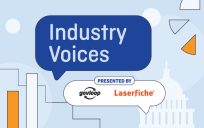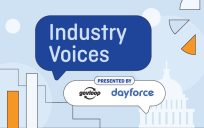Most government employees want to serve citizens better, faster and more reliably. But this goal seems harder for agencies any time their workload grows. Whether you are in federal, state or local, how can your agency become more resilient while meeting its mission objectives in the best possible way?
Automation might be the answer agencies are looking for. This technology involves machines performing tasks that are often manual and repetitive with little to no human involvement. When used effectively, this tool can save people energy, money and time. Even better, automation can make these workers’ agencies more agile, innovative and resilient.
Why are scores of agencies nationwide still hesitating about automation? According to Michael Peckham, Chief Financial Officer (CFO) at the Health and Human Services Department’s (HHS) Program Support Center (PSC), and AJ Ford, the Director of Public Sector Strategy at Tricentis, a software testing solutions provider, the reason is resistance to change. Yet automation can reward agencies from the top down as handsomely as it has many private-sector companies.
On Wednesday, Peckham and Ford spoke during GovLoop’s latest virtual summit. The pair explained three ways agencies can ease automation into their workflows.
1. Calm Fears
Unfortunately, change can scare people, and few tools can transform everyday routines as dramatically as automation. According to Peckham, clearing away the misconceptions about automation is crucial for getting public-sector employees to embrace it.
“What we need to promote to folks is we are using these tools to make our personal lives so much easier,” he said. “We are not trying to replace anybody.”
Ultimately, automating activities like data entry is not meant to eliminate data experts. Rather, automation is intended to free these personnel for more fulfilling work that is too complicated for machines.
2. Design For Humans
Human-centered design (HCD) considers perspectives from as many people as possible during the problem-solving process. Although seemingly straightforward, Ford argued more agencies should utilize this approach for adopting new capabilities like automation.
“If you’re not designing your systems and processes around users, you are going to have bigger problems than mission goals,” he said.
Take displaying data. Using HCD, agencies can determine which method of illustrating information is easiest to understand for their workers.
3. Update Processes
Before fully embracing automation, agencies may want to examine how their workflows already work. Often, automation uncovers surprising ways people have gotten around roadblocks in their responsibilities.
“There’s always something wonky where you weren’t prepared for what a human was doing in the process,” Peckham said. “It is important to go back and identify these processes before automating them.”
The Big Picture
If your office remains on the fence about automation’s potential, imagine the technology agencywide. By automating most of their processes, agencies can essentially field two workforces for the price of one.
Check out other recaps from today’s virtual summit here, and make sure to register for other upcoming GovLoop online trainings.
This online training was brought to you by:
![]()





Leave a Reply
You must be logged in to post a comment.